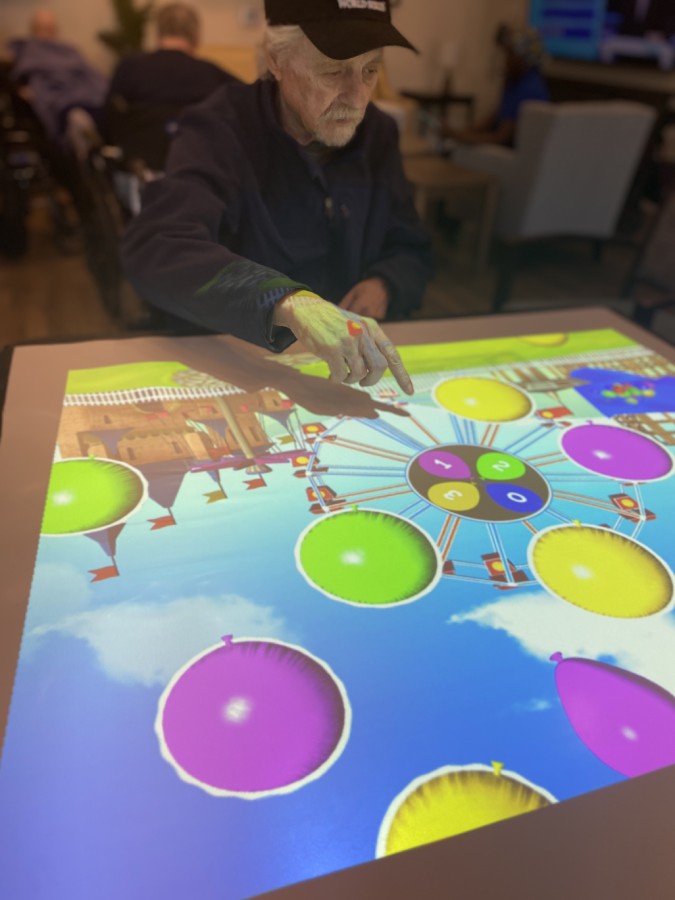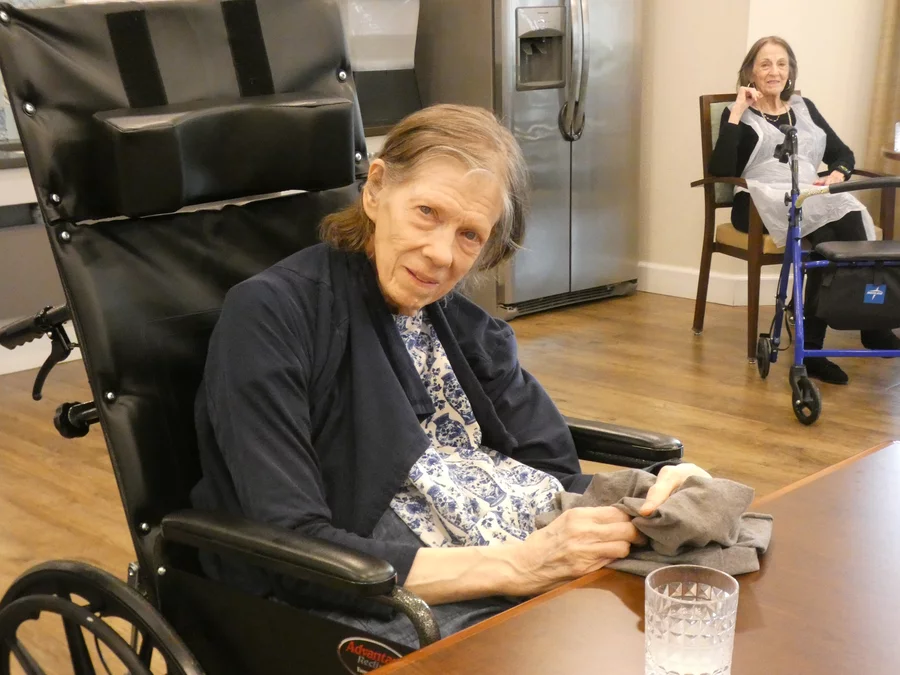TL;DR:
Sundowning is a common behavior in dementia patients, often marked by confusion, agitation, or anxiety in the late afternoon and evening. Recognizing early signs and understanding sundowning triggers can help families manage symptoms effectively. For families in Sugar Land, compassionate memory care—like that offered at The Village at Sugar Land—can provide vital support and peace of mind.
- What sundowning in dementia patients is and how it presents
- Common signs and symptoms of sundowning in the elderly
- Typical sundowning triggers to avoid
- Effective treatment and management strategies
- Personalized care options in Sugar Land, including memory care at The Village at Sugar Land
Sundowning is a common yet often misunderstood behavior experienced by individuals living with dementia, particularly in the late afternoon and evening hours. Families may notice their loved one becoming more confused, anxious, or agitated as the day winds down. This phenomenon can be both emotionally and physically exhausting for everyone.
Understanding the causes behind this shift in behavior is the first step toward providing effective, compassionate support. While sundowning can be challenging, it’s important to remember that help is available. By recognizing the signs, identifying potential triggers, and exploring care strategies, families can create a more peaceful environment.
For those in the Sugar Land area, specialized care options are available. These solutions focus on the unique needs of those affected by dementia. Care options for sundowning offer not only relief but also reassurance for both residents and their families. Continue reading to learn more.
What is Sundowning in Dementia Patients?
Sundowning in dementia patients refers to a pattern of increased confusion, restlessness, or agitation. This mood typically begins in the late afternoon and continues into the evening hours. The exact cause isn’t fully clear. However, the likely factors are changes in the body’s internal clock, fatigue, and overstimulation as the day progresses.
For families and caregivers, recognizing the signs of sundowning in dementia patients is essential for providing timely support. Common behaviors may include pacing, mood swings, yelling, confusion about time or place, and resistance to redirection or care. These symptoms can vary in intensity but often disrupt daily routines and sleep patterns. This impacts both the individual and their caregivers.
Although sundowning can be distressing, it’s important to remember that it is a manageable part of dementia. With understanding and the right care strategies, individuals experiencing sundowning in elderly stages of dementia can receive empathetic support.
Recognizing Signs and Symptoms of Sundowning
Sundowning in the elderly often begins subtly but can become more pronounced over time. As the day fades, individuals with dementia may display noticeable changes in behavior, mood, and awareness. Triggers include environmental shifts, such as reduced lighting or increased shadows, which can heighten confusion or fear.
Signs of sundowning in dementia patients may include irritability, restlessness, pacing, crying, delusions, or even aggression. Some individuals may become more withdrawn or ask to “go home,” even if they are already in a familiar place. Sleep disturbances are also common, with difficulty settling down at night or waking up disoriented.
Recognizing these symptoms early allows caregivers to respond with patience and proactive strategies. Though sundowning in elderly individuals can be emotionally taxing, understanding its patterns is key to reducing stress. Education ensures a safer, more comforting environment for those affected—and peace of mind for their loved ones.
Common Sundowning Triggers to Watch For
Understanding what may lead to sundowning in dementia patients can help families create a more stable, supportive environment. The exact causes of sundowning in the elderly vary, but several common triggers exist.
Fatigue is one of the most frequent culprits. After a full day of stimulation, the brain can struggle to process information clearly. Changes in lighting, such as dimming daylight or harsh indoor lights, can also cause shadows and visual confusion.
Other sundowning triggers include hunger, dehydration, pain, boredom, or a disruption in daily routine.
Overstimulation from noise, clutter, or too many people can heighten anxiety and lead to outbursts. Even internal discomfort, such as needing to use the restroom, may contribute.
By observing patterns and addressing these potential triggers early, caregivers can often reduce the severity or frequency of episodes. This will make evenings feel calmer and more predictable for their loved ones with dementia.

Effective Sundowning Treatments and Management Strategies
Managing sundowning in dementia patients begins with consistency, compassion, and a personalized approach.
Caregivers can ease evening agitation by maintaining a calm, predictable routine.
We recommend minimizing noise, reducing screen time, and gently guiding transitions into the evening hours. Simple steps like keeping lights on during dusk, offering a light snack, and playing soothing music can help reduce triggers. Encouraging gentle activity during the day, along with rest periods, may also ease late-day confusion.
While non-medical strategies are often effective, some individuals may benefit from medications to help with sundowning. These can be especially helpful if symptoms become disruptive or distressing. These may include low-dose antipsychotic medications, sleep aids, or antidepressants. Medication for people with dementia should always prescribed and monitored by a physician.
Ultimately, the most effective sundowning treatments combine understanding, environment, and professional care. By working closely with healthcare providers or a memory care team, families can find the right balance of strategies. Together, solutions are possible to bring more peace and comfort to their loved one’s evenings.
Personalized Care Options for Managing Sundowning in Sugar Land
When sundowning becomes difficult to manage, families in Sugar Land have access to compassionate, professional care. At The Village at Sugar Land, we specialize in supporting residents experiencing sundowning. Our structured routines, calming environments, and personalized care plans create a less triggering mindset.
We thoughtfully design our memory care community to reduce common sundowning triggers. We consider factors like confusion from lighting changes or overstimulation and promote comfort during the evening hours.
Residents benefit from familiar daily rhythms, nutritious meals, peaceful settings, and staff specially trained in dementia care. For families wondering what care options are available for sundowning in Sugar Land, our community offers many. We provide short-term respite stays, long-term memory care, and transitional support for those with progressing needs.
Above all, we focus on creating a safe, nurturing environment where every resident lives with dignity and understanding.
Relief for Sundowning in Sugar Land, TX
Sundowning in elderly patients often comes from a combination of internal and external factors. Fatigue, changes in lighting, disrupted routines, or unmet physical needs can all contribute to late-day confusion and agitation. Recognizing the signs of sundowning, such as restlessness, irritability, or confusion, is the first step in offering support.
By identifying common sundowning triggers and implementing structured, soothing environments, caregivers can often reduce the severity of symptoms. A variety of sundowning treatments are available. Your loved one may benefit from non-medical strategies like routine and lighting adjustments or from medications when necessary. For families in the Sugar Land area, professional memory care offers a compassionate, tailored approach.
At The Village at Sugar Land, we’re proud to provide expert, personalized care that brings peace of mind. Reach out today to schedule a tour and see how we can help.
Discover how memory care can ease sundowning symptoms—contact us today!

